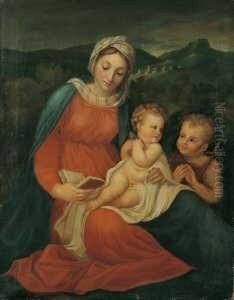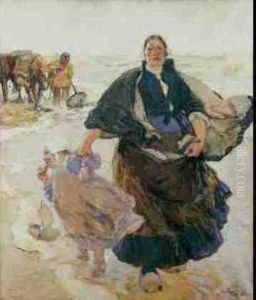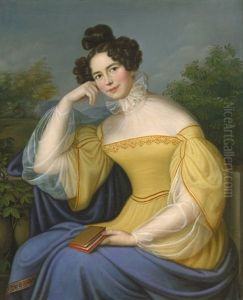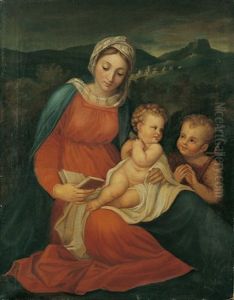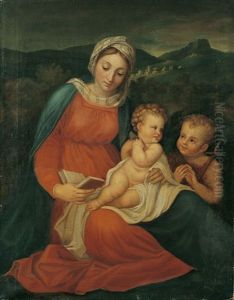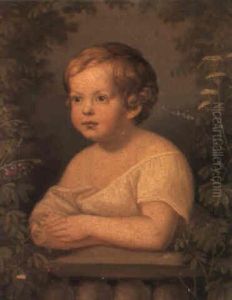Caroline Bardua Paintings
Caroline Bardua was a notable German painter born on June 11, 1781, in Ballenstedt, Germany. She emerged as a significant figure in the early 19th century, primarily known for her portraits. Bardua's work provides a fascinating insight into the cultural and social milieu of her time, capturing the intellectual and artistic circles of Germany during the Romantic period. Her education in art began under the guidance of various artists, including Johann Friedrich August Tischbein at the Academy of Fine Arts in Leipzig, which was quite progressive considering the limited opportunities available to female artists at the time.
Bardua moved to Weimar in 1808, where she became an integral part of the city's vibrant cultural scene. Weimar was a hub for writers, philosophers, and artists, making it an ideal place for Bardua to develop her artistic identity. She became closely associated with the households of Johann Wolfgang von Goethe and Friedrich Schiller, two titans of German literature, and her portraits often depicted members of their circles. Her work from this period reflects the intellectual vigor and aesthetic sensibilities of Weimar Classicism and Romanticism, blending realism with a nuanced understanding of her subjects' personalities and inner lives.
Despite the challenges faced by women in the arts during her time, Bardua achieved considerable recognition and was able to sustain herself financially through her art—a rare feat for a female artist in the 19th century. She remained active and respected in artistic circles throughout her life, leaving behind a legacy that includes not only her portraits but also her contribution to the visibility and acceptance of women in the art world. Caroline Bardua passed away on April 2, 1864, in Ballenstedt. Her works, though not as widely known today, remain an important part of the study of German Romantic art and the role of women artists in the 19th century.
